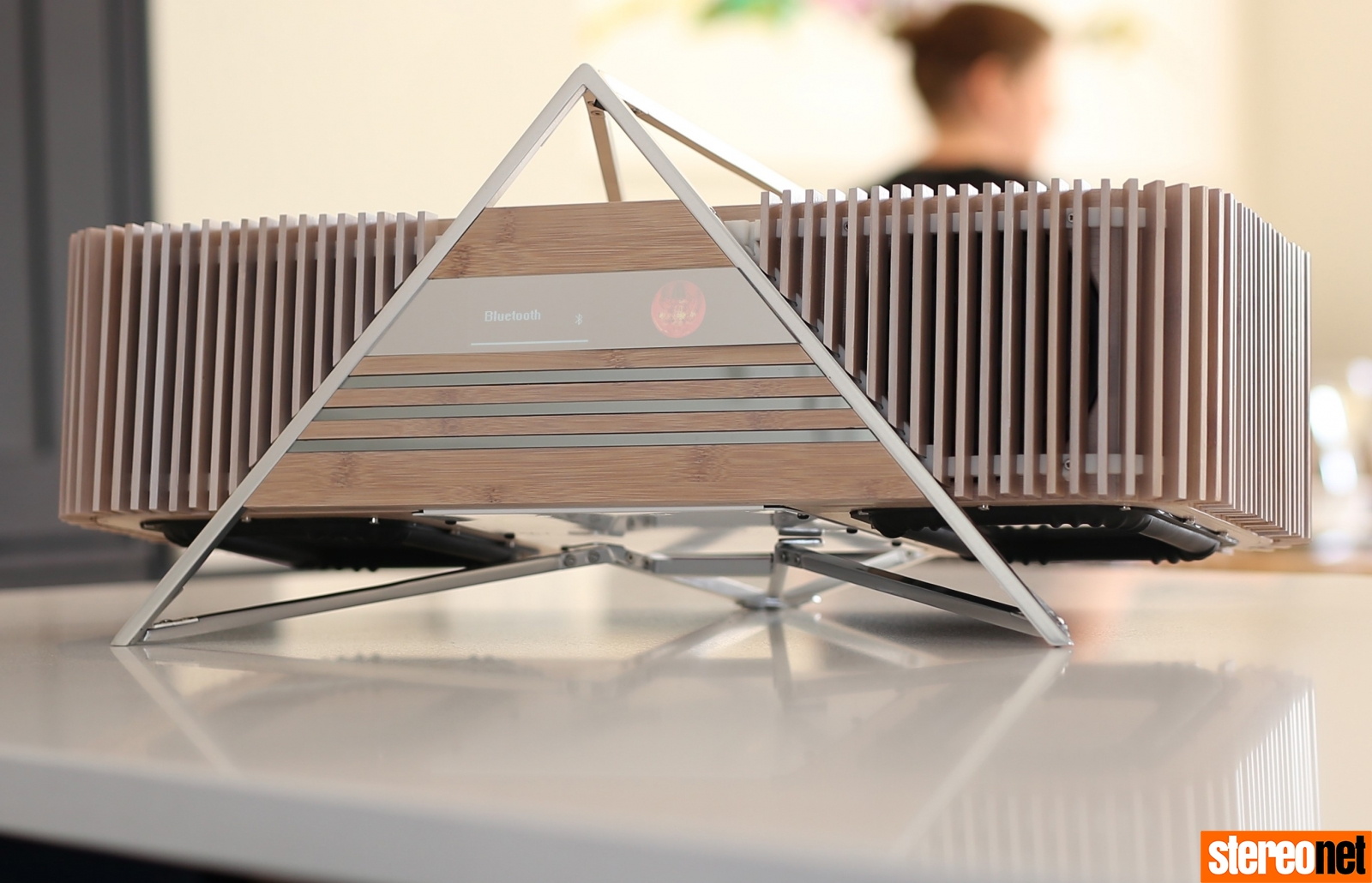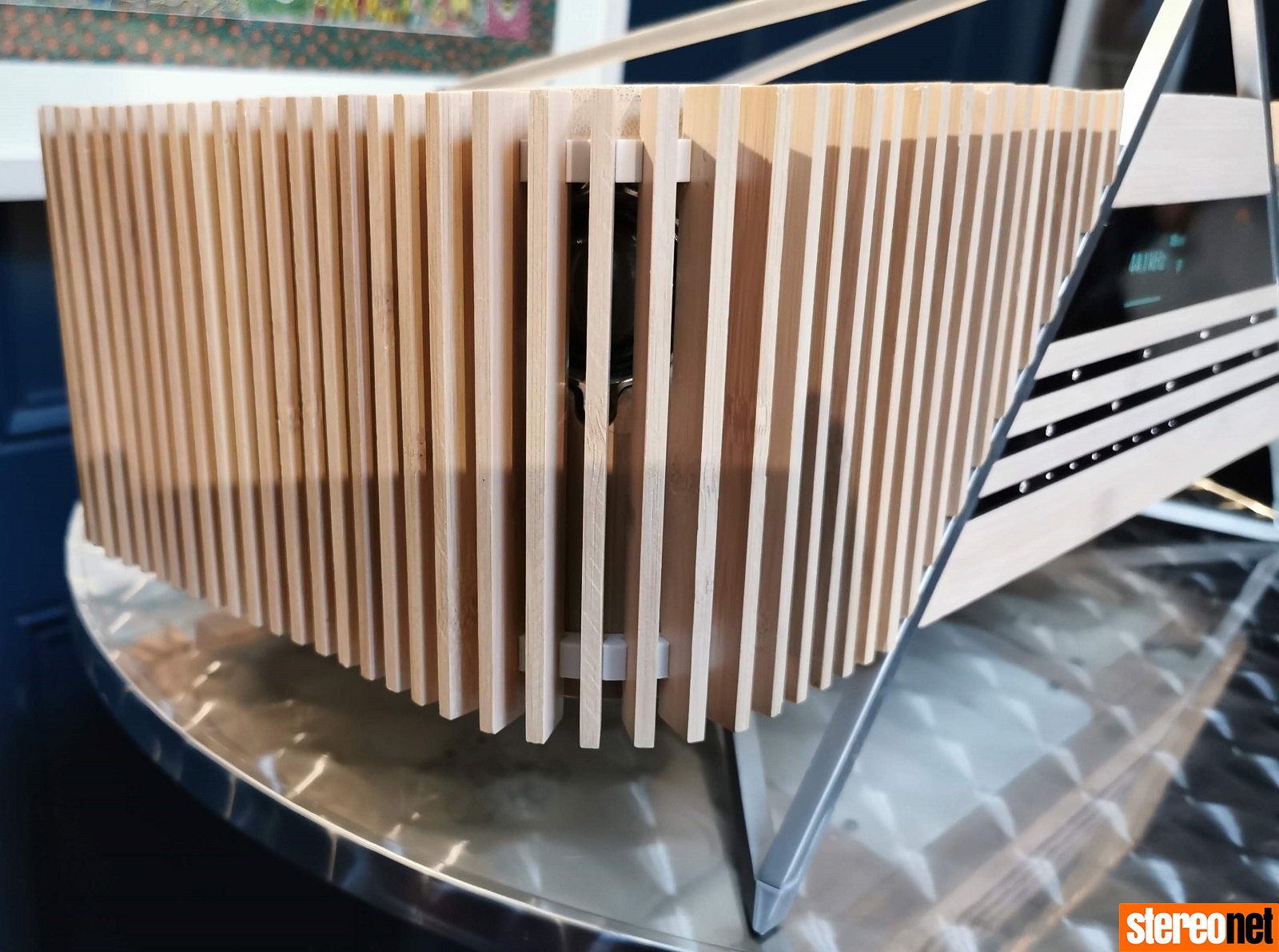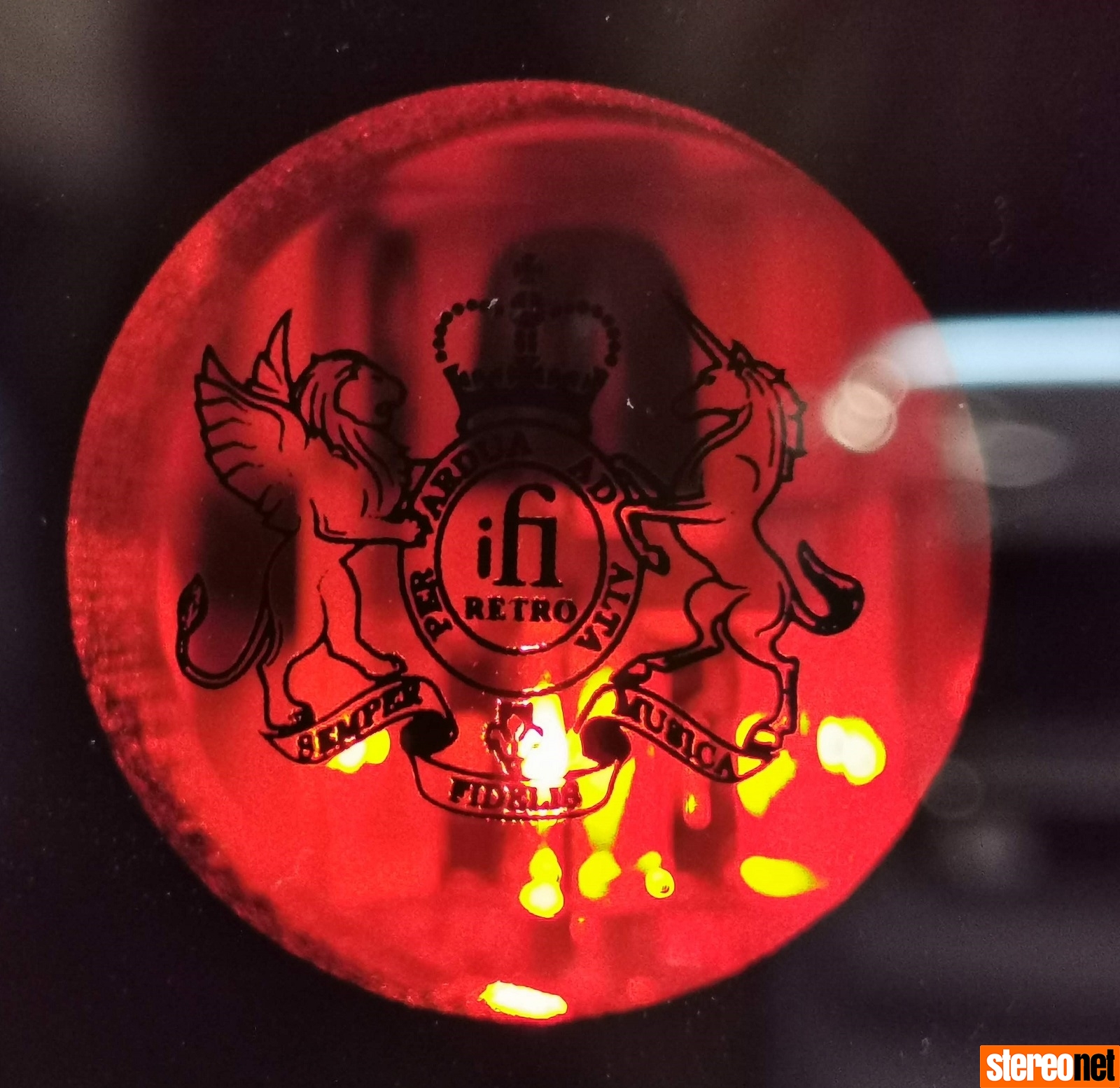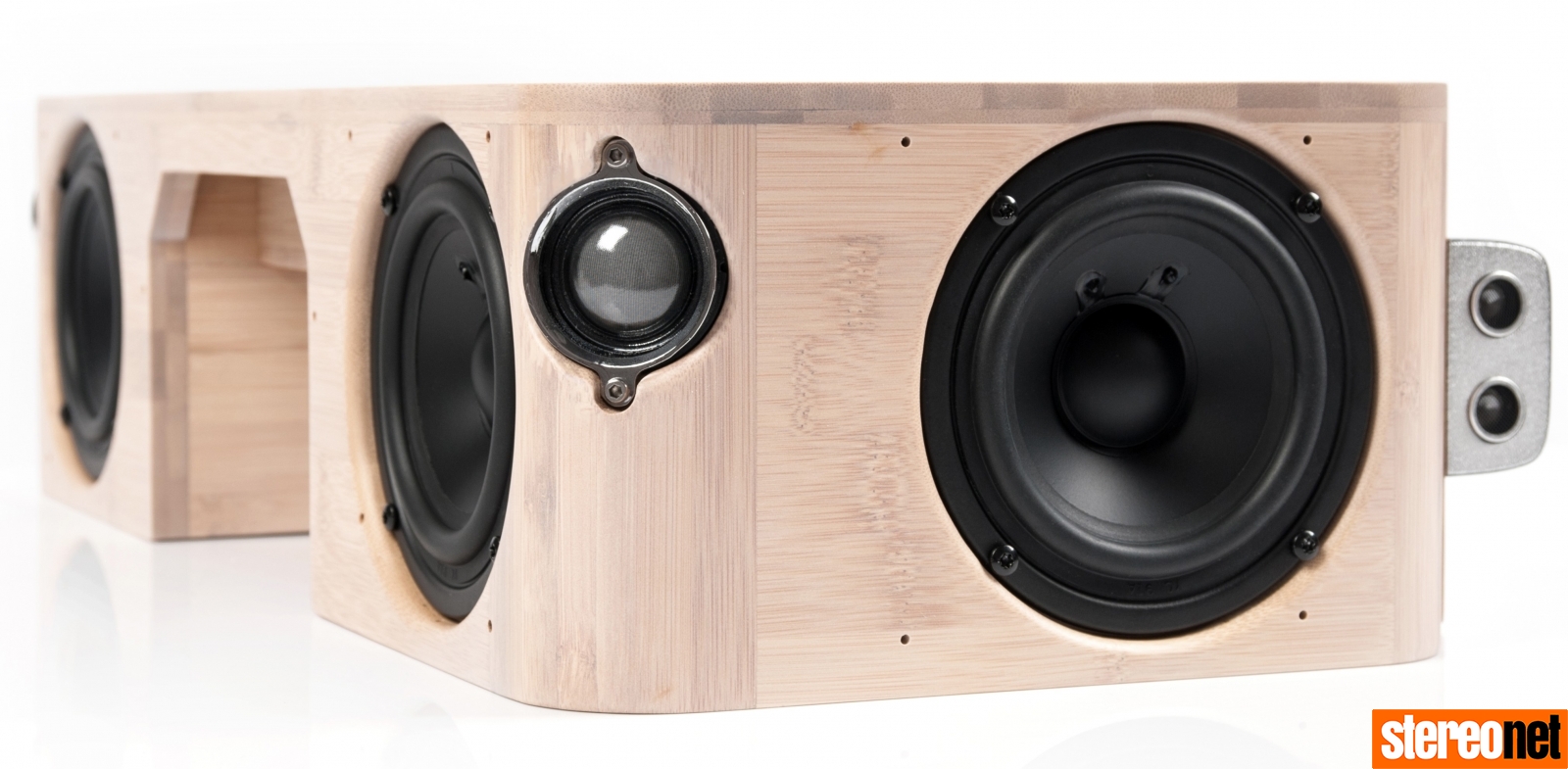IFI AURORA ALL-IN-ONE LIFESTYLE SYSTEM LAUNCHED AT HIGH END MUNICH

During the High End Show in Munich, iFi officially launched its digital wireless music system, dubbed Aurora.
Aurora has previously appeared at Munich and IFA under the guise Project Glastonbury. However, at High End Munich last week the UK-based digital audio company officially launched the hand-made all-in-one.

We were unable to attend the Munich gathering due to the opening of the Harman Luxury Studio but, we had an invitation to a more intimate show-and-tell in London's Soho and, that's where we were last night.
iFi’s new wireless music system, the Aurora, draws together a collection of proprietary technologies and, to our ears, it delivers an impressive sonic experience.

Clad in bamboo and suspended by an eye-catching aluminium frame, Aurora’s design can pull off the trick of blending into practically any decor as well as being able to be a focal point.
Chatting to French product designer Julien Haziza over a glass of Baron de Badassière (or, Lord Badass as we renamed it), he told us that the inspiration came from the architecture in Tokyo’s Omotesandō and Harajuku districts. He also added that he wanted to get away from the cloth-covered boxes which are commonplace in this arena.
iFi Aurora
Behind the bamboo slats that curve around Aurora’s sides is six drivers, with a further two down-firing steel bass radiators on the unit’s underside.
The system’s control panel sits front and centre, with touch-sensitive controls and an OLED display inlaid with bamboo.
The 59x27x29cm (WxHxD) Aurora connects to your home Wi-Fi network to enable music to be streamed via your favourite apps, or play audio files stored on networked devices such as computers and NAS drives. Also present is Bluetooth so squirting audio directly from your smart device is an option.

Aurora supports audio data up to 32-bit/192kHz without conversion or down-sampling via Wi-Fi, USB or Ethernet cable. Bluetooth streaming also delivers much better sound quality than is typically the case, engineered by iFi to be less ‘lossy’ than off-the-shelf Bluetooth solutions. The latest high-quality Bluetooth codecs are supported, including aptX HD, LDAC and LDHC, as well as AAC.
Hooking-up Aurora to a Wi-Fi network is super simple thanks to its push-button WPS set-up. Using Linkplay’s MUZO Player app – or any UPnP/DLNA streaming app – you can configure the system and control music. AirPlay and Spotify Connect are also supported.
As demonstrated at the get-together by iFi's Chief Engineer, Thorsten Loesch, you can link several Auroras together on a Wi-Fi network to create a multi-room system. You can then play your Auroras in-sync or control them individually.
Power
iFi’s ‘PureEmotion’ amp system powers Aurora. The hybrid circuit design comprises several crucial stages. Starting with the preamp stage that incorporates a Russian 6N3P valve, you can see glowing through a window next to the OLED display. The valve takes the analogue audio signal delivered by the Aurora’s DAC (Digital-to-Analogue Converter) circuitry – based around a chip from ESS Technology’s renowned 32-bit Sabre DAC family – and adds gain in preparation for further amplification. Additionally, the 6N3P brings a discernable warmth into the mix.

The resulting low-level signal then passes to the power amp stage. iFi’s ‘current multiplier circuit’, a highly efficient switching power amplifier is not to be confused with regular Class D amplification. Class D amp modules are often used in audio products because they are energy efficient and able to generate relatively high current from a small device. However, in terms of sound quality, typical ‘off-the-shelf’ Class D amps do not perform to what iFi needs. One of the reasons is that the power switching occurs at varying frequencies which may be within the audible range – the higher the power level, the lower the switching frequency.
iFi’s current multiplier circuit differs because the switching frequency is fixed at an ultra-high level – around 1.5MHz, which is beyond the audible frequency spectrum. The result is a high level of efficiency, multiplying the current supplied by the valve several thousand-fold while maintaining greater linearity and lower noise than typical switching amplifiers. Coupled to this are a low-pass circuit and a feedback loop with the latter making sure that the output frequency is ideal for the load, and everything is ‘clock-locked’ via iFi’s GMT (Global Master Timing) circuit to ensure exact precision.
The PureEmotion amp stage delivers a total of 320W to power Aurora’s eight custom-made speaker drive units.
Drivers
The main four main drivers sport a 120mm cone made from coated long-fibre paper, a material selected for its optimal balance between stiffness and self-damping. Two of these drivers fire out front with the other two firing out to the sides.

The main drivers are deployed in a wide-bandwidth role to cover the vast majority of the audible frequency spectrum, rolling off towards very low and very high frequencies. The drive unit design, together with the inert nature of Aurora’s well-braced bamboo housing, enables a flat frequency response from around 60Hz to 8kHz. Because of this approach, there is no need to use a crossover to hand over from one drive unit to another and results in excellent phase response through the midrange.
Joining the main drivers are a pair of 28mm silk-dome tweeters, one at each side, covering frequencies from 8kHz to 35kHz. As the treble region is considered to begin at around 5kHz, and the limits of human hearing extend to about 20kHz, Aurora’s high-frequency drivers behave more like super-tweeters than traditional tweeters. With a simple first-order crossover and a shallow waveguide to provide time-alignment, these tweeters not only deliver high-frequency sounds but are also critical to Aurora’s spacious soundstage.

Finally, there is a brace of down-firing rectangular passive bass radiators on the underside of the cabinet. The diaphragm used by these drivers is formed from a composite of carbon, iron and ethylene-vinyl acetate, a well-damped material. The cleverly-designed diaphragm is combined with a self-centring, double-ribbed rubber surround, negating the need for a basket.
The net result is a seamlessly coherent performance with a silky-smooth frequency response and bass that delves far deeper than most all-in-one systems.
SoundSpace and TrueBass
iFi eschews DSP (Digital Signal Processing) and instead incorporates sound-tuning technologies that operate entirely in the analogue domain. Firstly, SoundSpace combines the drive unit array with a proprietary matrix which adjusts the output from specific drivers at certain frequencies.
We were told that SoundSpace is fundamental to the Aurora’s immersive, room-filling performance, and it enables the soundstage to extend beyond the confines of the cabinet.
TrueBass is another proprietary sound-tuning technology that operates strictly in the analogue domain. The TrueBass system, incorporating the two downward-firing bass radiators, ensures the Aurora delivers a low-end with realistic depth and definition.
ART (Automatic Room Tailoring)
The Aurora incorporates a ‘room correction’ system called ART which has been entirely developed in-house by iFi.

At the press of a button, six microphones dotted around the Aurora measure the distance to the surrounding walls using ultrasound. Then, a 32-bit ARM Cortex microprocessor adjusts the output from the driver array to precisely tailor Aurora’s performance.
All the adjustments are made strictly in the analogue domain, without relying on DSP or feedback in the manner of many other room correction systems. With it you get more precise tailoring of the sound, reacting to room modes and reflections from walls without attempting to ‘neutralise’ the sound in an unnatural way. The upshot here is that you can place Aurora where you want it and it will always perform its best.
Inputs

In addition to wireless connectivity, there are optical, coaxial, USB and Ethernet inputs for your digital sources, while 3.5mm socket provides an analogue connection. Furthermore, there is the fab inclusion of a microSDHC card slot.
You can even use Aurora with Alexa. All you have to do is link the Aurora (or several Auroras in a multi-room context) to any Echo speaker, from the input upwards, via Wi-Fi or Bluetooth.
Price and availability
The iFi Aurora all-in-one wireless music system is available from July at an RRP of £1,299 including VAT in the UK. Euro pricing is €1,499 inc. VAT and, over in the US of A, you can expect a price tag of $1,299 excluding sales tax.
Jay Garrett
StereoNET UK’s Editor, bass player, and resident rock star! Jay’s passion for gadgets and Hi-Fi is second only to being a touring musician.
Posted in:Hi-Fi Lifestyle
Tags: ifi audio munich2019 high end munich 2019
JOIN IN THE DISCUSSION
Want to share your opinion or get advice from other enthusiasts? Then head into the Message Forums where thousands of other enthusiasts are communicating on a daily basis.
CLICK HERE FOR FREE MEMBERSHIP



























